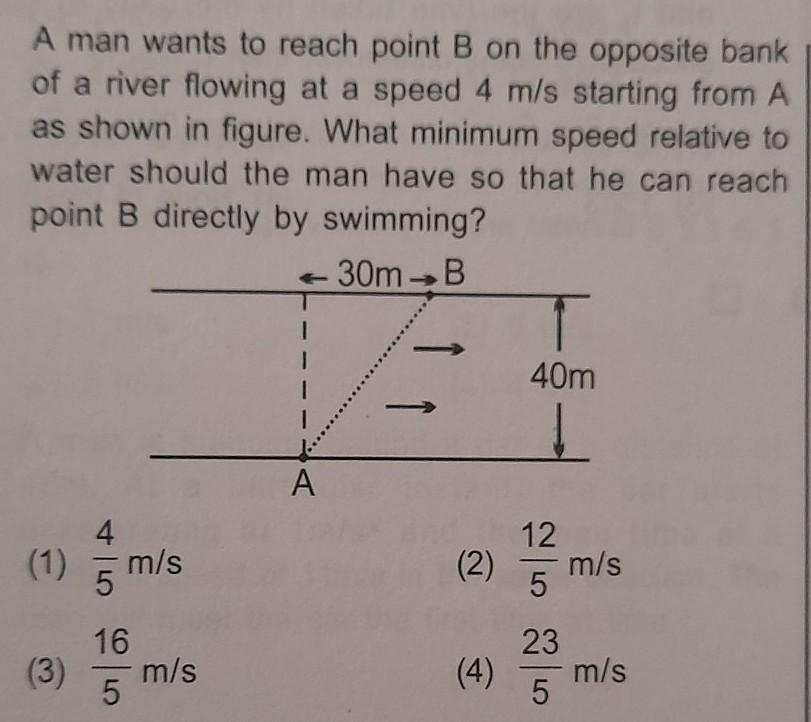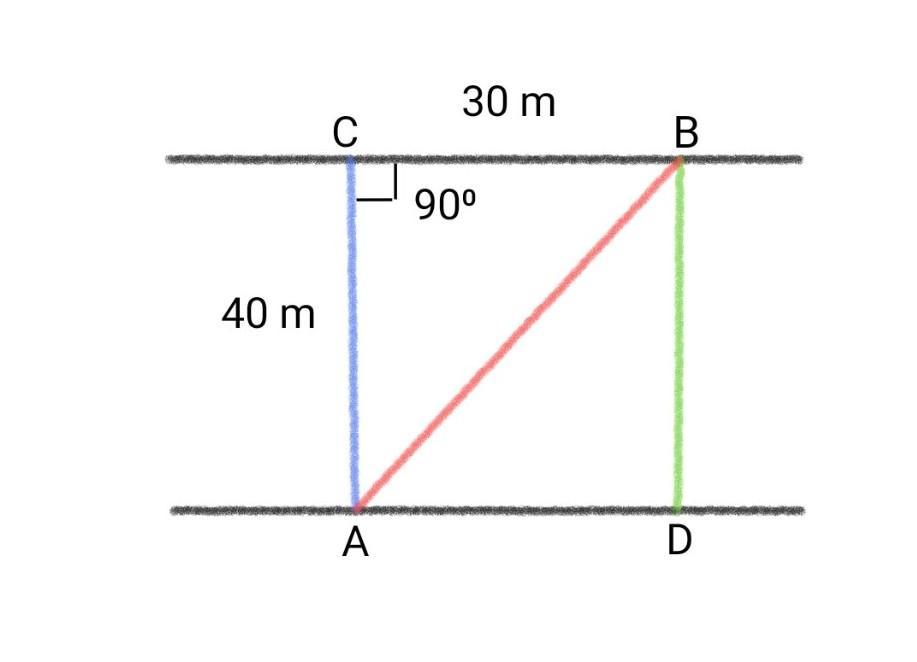A man wants to reach point B on the opposite bank of a river flowing at a speed 4 m/s starting from A as shown in figure. What minimum speed relative to water should the man have so that he can reach point B directly by swimming?

Answers 2
Given data : A man wants to reach point B on the opposite bank of a river flowing at a speed 4 m/s.
Solution : Firstly we have to find out, distance between A to B.
Now, according to figure,
➜ Distance AC = 40 m
➜ Distance BC = 30 m
➜ ∠ACB = 90⁰
Now, by Pythagoras theorem,
➜ {AB}² = {AC}² + {BC}²
➜ {AB}² = {40}² + {30}²
➜ {AB}² = 1600 + 900
➜ {AB}² = 2500
➜ AB = √2500
➜ AB = 50 m
Case 1 : If man move A directly to B, it is not possible because of the speed of the river. When a man matches his speed with the speed of the river, he will reach point B.
Let, speed of man is equal to speed of river.
Hence,
➜ Speed of man = Distance/Time
➜ 4 = AB/Time
➜ 4 = 50/Time
➜ Time = 50/4 ----{1}
Case 2 : If man move A directly to B, it is not possible because of the speed of the river, So man needs to walk in vertical direction to A (which is A to C), due to presence of river motion he will reach to point B.
Let, minimum speed of man be x.
Hence,
➜ Speed of man = Distance/Time
➜ x = AC/Time
➜ x = 40/Time
➜ Time = 40/x ----{2}
According to case 1 and case 2 the man reaches at point B. So,
Assume that man take same time in both cases to reach at point B.
Hence, from eq. {1} and eq. {2}
➜ 50/4 = 40/x
➜ x = {40 * 4}/50
➜ x = 160/50
➜ x = 16/5 m/s
Answer : Hence, the minimum speed of man is 16/5 m/s.

-
Author:
tiannasampson
-
Rate an answer:
6
Answer:
ejwjaiasjjsiwudhaiwksjdjdoe
-
Author:
bjreynolds
-
Rate an answer:
9
